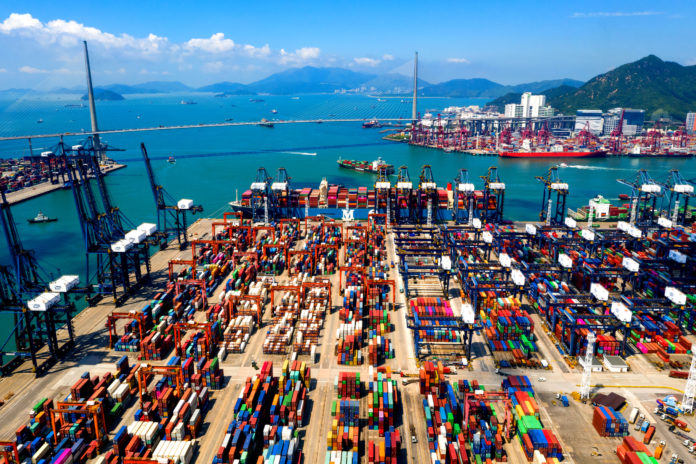Ports around China’s Pearl River Delta have been forced to stop operations again, this time due to Typhoon Kompasu.
At midnight, Yantian International Container Terminal (YICT) in Shenzhen in China’s Guangdong province, as well as Hong Kong port, ceased container handling operations after the Chinese weather authorities issued a yellow alert. In Hong Kong, the No. 8 signal, signifying gales or storms, was raised, advising people to stay indoors.
Vessel-tracking data shows that at least 67 ships are now queued outside Yantian, the highest since 26 August. In May, a Covid-19 outbreak in Guangdong caused unprecedented congestion in Yantian, prompting liner operators to skip calls to the port. Guangdong is one of China’s industrialised provinces, making Yantian, which handled 13.34 million-TEU in 2020, one of the world’s busiest container ports.
Kompasu, the Japanese word for “compass”, is the second typhoon to affect Hong Kong in three days, after Typhoon Lionrock flooded low-lying areas in the territory over the weekend. However, the winds from Typhoon Kompasu are stronger and could cause greater damage than Typhoon Lionrock.
Congestion in container ports worldwide has disrupted supply chains as ships endure a longer waiting time to berth. China, which is aiming for zero Covid-19 cases, enforces lockdowns each time an outbreak occurs, resulting in partial or full suspensions of container ports in Yantian and Ningbo-Zhoushan this year.
The typhoon season in East Asia has also messed up port operations, with Shanghai and Ningbo-Zhoushan having to close when typhoons In-fa and Chanthu hit in July and September, respectively.
Martina Li
Asia Correspondent







